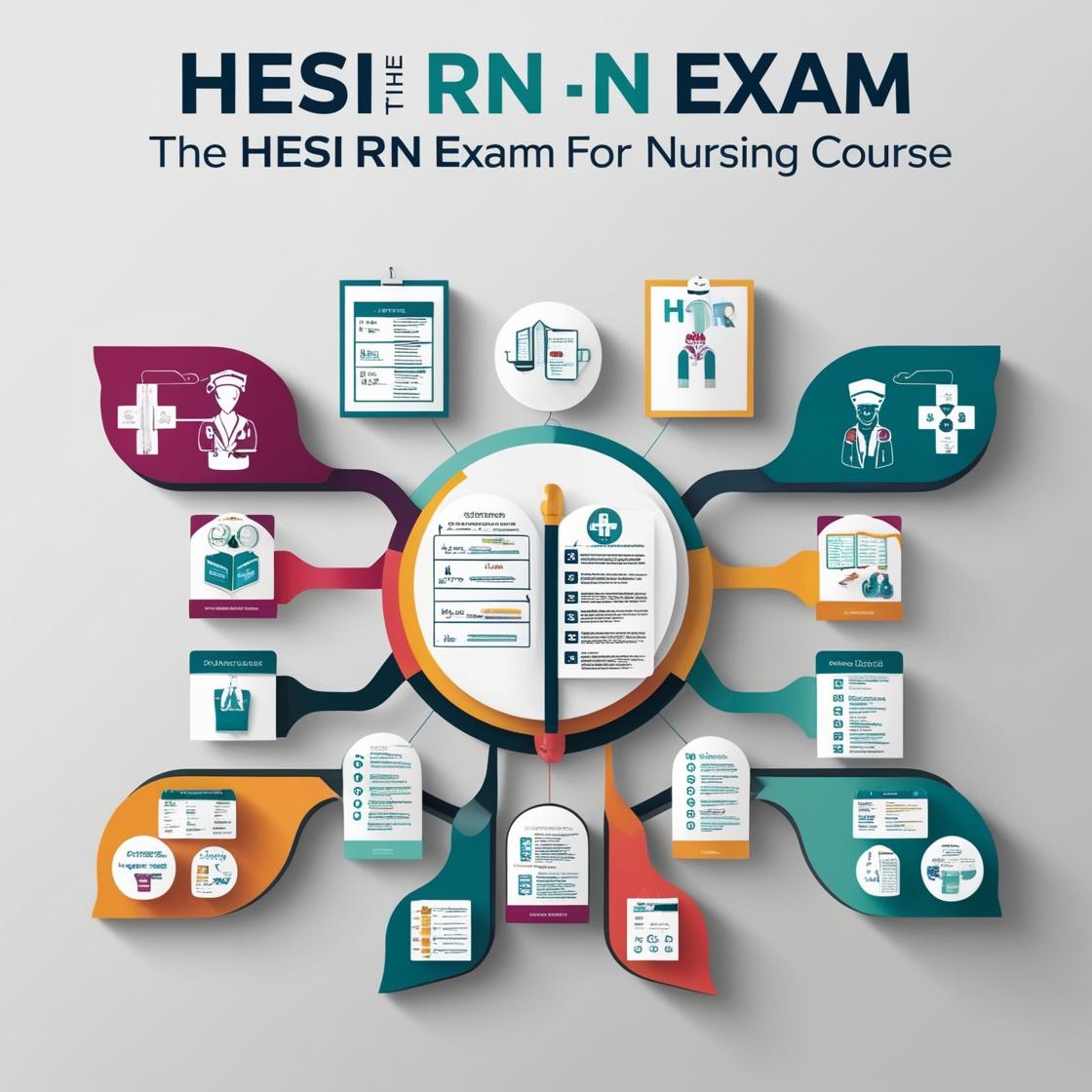HESI RN
HESI RN Exit Exam 2024 Quizlet Capstone
1. A child has a nosebleed (epistaxis) while playing soccer. In what position should the nurse place the child?
- A. Position the child lying flat and apply pressure to the bridge of the nose.
- B. Position the child sitting up and leaning forward.
- C. Have the child tilt the head back and pinch the nose.
- D. Position the child lying on their side and apply ice to the nose.
Correct answer: B
Rationale: The correct answer is to position the child sitting up and leaning forward. This position helps prevent blood from flowing down the throat, reducing the risk of choking or vomiting. Choice A is incorrect because lying flat can cause blood to flow down the throat. Choice C is wrong as tilting the head back may lead to blood entering the throat. Choice D is also incorrect as applying ice is not recommended for nosebleeds and lying on the side may not prevent blood from flowing down the throat.
2. A client with cirrhosis is experiencing ascites and peripheral edema. What is the nurse's priority intervention?
- A. Administer furosemide as prescribed.
- B. Administer albumin to increase oncotic pressure.
- C. Elevate the client's legs to reduce swelling.
- D. Administer a sodium-restricted diet.
Correct answer: A
Rationale: The correct answer is A: Administer furosemide as prescribed. Administering furosemide, a loop diuretic, is the priority intervention in a client with cirrhosis experiencing ascites and peripheral edema. Furosemide helps promote diuresis and reduce fluid buildup in the body. Choice B, administering albumin to increase oncotic pressure, may be beneficial in some cases but is not the priority intervention for immediate fluid removal. Elevating the client's legs (Choice C) and administering a sodium-restricted diet (Choice D) are important aspects of managing edema and ascites but are not the priority interventions in this situation.
3. A client frequently admitted to the locked psychiatric unit repeatedly compliments and invites one of the nurses to go out on a date. The nurse's response should be to
- A. Ask not to be assigned to this client or to work on another unit
- B. Tell the client that such behavior is inappropriate
- C. Inform the client that hospital policy prohibits staff from dating clients
- D. Discuss the boundaries of the therapeutic relationship with the client
Correct answer: D
Rationale: The correct response for the nurse in this situation is to discuss the boundaries of the therapeutic relationship with the client. By doing so, the nurse can reinforce professionalism, establish clear boundaries, and prevent ethical conflicts. Option A is incorrect because avoiding the client or unit does not address the issue at hand and may compromise patient care. Option B, while acknowledging the behavior, does not address the underlying reasons and boundaries. Option C, stating hospital policy, is not as therapeutic or client-centered as discussing the therapeutic relationship directly.
4. A client with diabetes mellitus is prescribed metformin. What teaching should the nurse include?
- A. Take the medication with meals to reduce gastrointestinal upset.
- B. Monitor renal function regularly due to the risk of lactic acidosis.
- C. Avoid alcohol consumption while taking this medication.
- D. Check blood glucose levels regularly to ensure proper management.
Correct answer: B
Rationale: The correct teaching for a client prescribed metformin includes monitoring renal function regularly due to the risk of lactic acidosis, especially in clients with impaired kidney function. While taking metformin with meals can reduce gastrointestinal upset, it is not the highest priority teaching point. Avoiding alcohol is generally recommended but not the most critical teaching point in this scenario. Checking blood glucose levels regularly is important for diabetes management but not specifically related to metformin use.
5. A client with acute pancreatitis is experiencing severe abdominal pain. Which intervention should the nurse implement to help manage the client's pain?
- A. Encourage deep breathing exercises
- B. Place the client in a side-lying position with knees bent
- C. Administer oral analgesics as prescribed
- D. Encourage the client to take small sips of water
Correct answer: B
Rationale: The correct intervention to help manage the client's pain in acute pancreatitis is to place the client in a side-lying position with knees bent. This position can alleviate abdominal pain by reducing pressure on the pancreas and improving comfort. Encouraging deep breathing exercises (Choice A) is beneficial for other conditions but may not directly help alleviate abdominal pain in pancreatitis. Administering oral analgesics (Choice C) may be necessary but is not the initial priority for managing pain in acute pancreatitis. Encouraging the client to take small sips of water (Choice D) is important for hydration but is not directly related to pain management in this context.
Similar Questions

Access More Features
HESI RN Basic
$89/ 30 days
- 50,000 Questions with answers
- All HESI courses Coverage
- 30 days access @ $89
HESI RN Premium
$149.99/ 90 days
- 50,000 Questions with answers
- All HESI courses Coverage
- 30 days access @ $149.99
